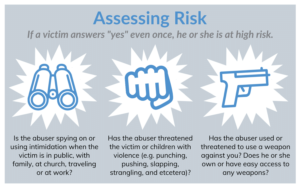Overwhelmingly, a faith leader or fellow congregant will be the first person a victim of domestic violence tells about their abuse. This puts an incredible responsibility on your shoulders.
As a faith leader, you can offer unconditional acceptance and spark hope where others cannot. Yet, for a victim of domestic violence, even clergy must learn how to respond appropriately.
Your first responsibility is to believe the victim.
Congregants as Victims
As a person regularly called on to console, comfort and counsel others, your first instinct after talking to a victim may be to bring the two parties together to see if their differences can be resolved. While this is a normal first step for most couples, it does not apply in abusive relationships. Even if you are already counseling the couple, it’s best to meet with them separately to address this situation.
Your first duty is to establish trust.





